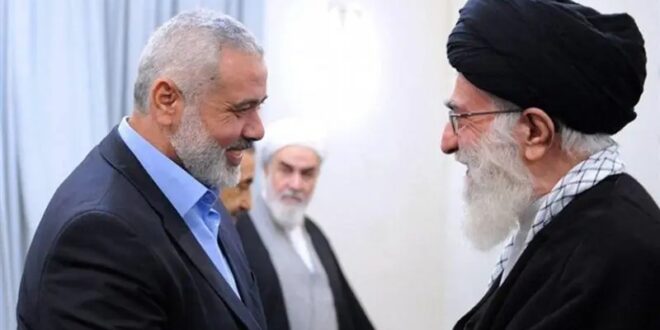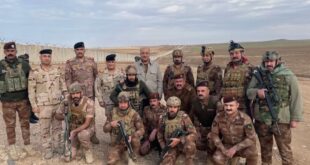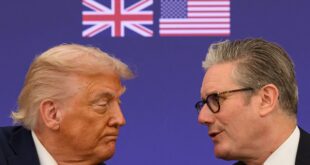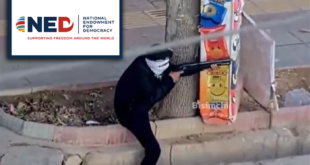CIA Director William J. Burns has declared that the “key to Israel’s—and the region’s—security is dealing with Iran. The Iranian regime has been emboldened by the crisis and seems ready to fight to its last regional proxy, all while expanding its nuclear program and enabling Russian aggression.” [1] Hamas’ invasion of Israel is part of a broad attack by Iran and its proxies. How does the war on Israel fit into the Islamic Republic of Iran’s regional and global goals?
The South-North Background of the Gaza Conflict
The clash of civilizations, predicted in 1993 by Samuel Huntington, asserted that “A West at the peak of its power” would face “non-Western countries that increasingly have the desire, the will and the resources to shape the world in non-Western ways.” [2] Iran, according to former CIA Deputy Director, Michael Morell is one of those non-Western countries: “Iran wants to be the hegemonic power in the Middle East, it wants, in short, to reestablish the Persian Empire, which at its height in 500 BCE controlled 45 percent of the world’s population.” [3]
Israel and Ukraine, both pro-Western countries, face extensive attacks on their territories, the targeting of civilians, and the commission of war crimes by non- Western countries. Russia, Iran, and Iran’s proxies—which include Hamas,
Palestinian Islamic Jihad, Hezbollah and many other groups in Syria and Iraq—see themselves as part of the “Global South,” which also includes China and South Africa. Cooperation and mutual assistance between them is extensive. Iran supplied thousands of loitering munitions—single-use explosive drones, colloquially referred to as “suicide” or “kamikaze” drones—for use against Ukraine. Iranian technology and Iranian drones were also used by Hamas in its murderous attack against Israel on October 7, 2023.
Hamas has also adopted the terminology of the Global South, describing Israel as part of the arrogant Global North. Hamas leader Basem Naim, for example, located the October 7 attack within this framework, presenting it as “a defining moment and a strategic opportunity – not only for our people, but also for our Arab and Islamic nation – to rise from its slump and regain the civilizational initiative, and to present a different model for managing humanitarian affairs in general, after the West, its leadership, and its systems failed to protect humanity from fascism and racism. … This opportunity must not escape from our hands, otherwise we may – God forbid – wait decades for a similar moment to occur again.” [4]
Based on this perceived common interest of Global South forces, China vetoed a proposed resolution in the Security Council, which called on the UNSC “to act on the Israel-Hamas conflict by calling for pauses in fighting to allow humanitarian aid access, the protection of civilians and a stop to arming Hamas and other militants in the Gaza Strip”. [5] South Africa filed a lawsuit against Israel at the International Court of Justice. Zwelifele Mandela, grandson of Nelson Mandela, asserted a similarity between apartheid in South Africa and policies of the “Zionist entity.” [6]
Gaza War 2023
Since the Islamic revolution in 1979, Iranian leaders never concealed their aspiration to wipe out the State of Israel and annihilate its inhabitants. According to the founder of the Islamic Republic of Iran, Ayatollah Ruhollah Khomeini, “The Jews and their foreign backers are opposed to the very foundation of Islam and wish to establish Jewish domination throughout the world. Since they are a cunning and resourceful group of people, I fear that God forbid they may one day achieve their goal.” [7] Khomeini described the Shah as an Israeli agent. [8] In his book and his articles, he claimed in the spirit of Sayyid Qutb’s book, Our war against the Jews, that the Jews were the enemies of Islam from its inception. [9]
Iran’s military support for Hamas dates back to the 1990s. Since the disengagement from the Gaza Strip, Hamas’ relations with Iran have grown stronger, with Iran becoming the primary source of knowledge and military ammunition for Hamas operatives. As early as 2012, leaders of the Izz ad-Din Al-Qassam brigade admitted that they could not fight Israel without the massive aid they received from Iran. [10] At that time, following the outbreak of war in Iran’s ally Syria, a dispute arose among the leadership of Hamas between the faction supported by Mahmoud Al-Zahar, who favored continued close relations with Iran, and other leaders who sought to align with what they saw as an emergent Sunni Islamist regional bloc. This dispute did not ultimately lead to a split within the organization, and by 2014 Hamas had rebuilt its relations with Iran. [11]
After, Ismail Haniyeh, the head of the political bureau of Hamas thanked Teheran for its support: “The resistance in Palestine is part of the broad resistance movement in the region, and we are in a strategic relationship with our brothers in the Islamic Republic of Iran, with our brothers in Hezbollah, and with many parties in the region. It’s not a secret when I say that the Islamic Republic has had a very important role in building this force.” [12]
The threat posed by the signing of the Abraham Accords between Israel and two Gulf states, along with Morocco and Sudan, in 2020 pushed Tehran to condemn normalization between the UAE and Israel as “strategic stupidity.” It then, in 2021, urged Hamas to take action. Ahead of October 7, Iranian leaders expected another normalization agreement, this time between Israel and Saudi Arabia, isolating Iran in the Persian Gulf and therefore, in their view, threatening its national security. [13]
In a statement on its website, Hamas located its decision to launch the October 7 attacks as part of an effort to prevent further Arab normalization with Israel. “What prompted the leadership of the Izz al-Din al-Qassam Brigades to take this decision? … the point of playing and manipulating the Palestinian cause has reached its peak, and there is an assessment of the situation that indicates that the plans to liquidate the Palestinian cause have taken a new turn, in light of the talk of a new wave of Arab normalization.” [14]
Saudi King Abdullah indicated how much Hamas had become a source of friction between Riyadh and Tehran in 2009 at the White House: “‘The King described his conversation with FM Mottaki [Iran’s foreign minister at that time] as a heated exchange, frankly discussing Iran’s interference in Arab affairs. When challenged by the King about Iranian relations with Hamas, Mottaki protested that these are Muslims.” “No, Arabs,” countered the King. “You, as Persians, have no business meddling in Arab matters.” [15]
In October 2023, the Iranian fear of a peace agreement between Israel and Saudi Arabia led Iran to authorize Hamas to invade Israel. [16] Saudi officials had moved away from their long-held position that a fully implemented two-state solution was a precondition to normalization with Israel. At that stage, they had not yet specified the type of more provisional steps they would accept in exchange for an agreement with Israel, such as vague statements regarding improving Palestinian living standards, or creating a pathway toward the eventual establishment of a Palestinian state. [17] Iran’s goal was to coerce Saudi Arabia to return to its traditional position of not signing a normalization agreement with Israel until the Palestinian problem was entirely resolved.
Hamas tries to obfuscate the reality that it has become the servant of Iran and is working to achieve Iranian hegemony in the Middle East. Its General Principles document states: “Hamas stresses the necessity of maintaining the independence of Palestinian national decision-making. Outside forces should not be allowed to intervene.” [18] Official declarations by Tehran, however, reveal the importance of the Iranian-Hamas connection. In remarks made shortly before his assassination (and quoted by Gen. Gholamali Rashid, a commander in Iran’s Islamic Revolutionary Guards Corps), Quds Corps commander Qassem Soleimani said:
I have assembled for you six armies outside Iranian territory, and I have created a corridor 1,500 km long and 1,000 km wide all the way to the shores of the Mediterranean Sea… One army is in Lebanon. It is called Hezbollah. Another army is in Palestine and it is called Hamas and the Islamic Jihad (PIJ). One army is in Syria. Another army is in Iraq and is called the Popular Mobilization Units (PMU), and another army is in Yemen and is called Ansar Allah [i.e., the Houthis] … All of these have created deterrence in the service of our dear Iran. [19]Ismail Haniyeh uttered similar statements in an interview on Iran’s Al-Alam television channel, when he described Soleimani’s vital role in shaping the “axis of resistance”. [20]
The Gaza war following October 7 confirms the Hamas role as part of Iran’s long-term proxy war. [21] It is worth noting that after the October 7 massacre, ISIS officials attacked Hamas for choosing the wrong ally. ISIS supporters produced pictures of Khaled Mashʿal together with Iran’s Supreme leader Ali Khamenei, and asked “Why are Rafidites [pejorative term for Shi’ites] at the forefront of the Gaza war?” [22] This is not new, Salafi groups in Gaza such as Jaysh al-Ummah (the Army of the Nation) have condemned Hamas since 2009 for being a tool in the hands of the Iranian Shi’ite regime. [23]
The Shi’ite Houthis attacked Israel from Yemen using drones and missiles. The Shi’ite Hezbollah attacked Israel from Lebanon. And Iraqi-Shi’ite militias such as the Popular Mobilization Forces (Quwwāt al-Ḥashd ash-Shaʿbi) attacked Israel from Syria. The Wall Street Journal found that Iranian security officials helped plan Hamas’ Saturday surprise attack on Israel and green lighted the assault at a meeting in Beirut on October 2, five days before the attack, “according to senior members of Hamas and Hezbollah.” [24]
In a recent interview with the Egyptian publication Al-Masir, Hassan Hoballah, the Hezbollah official in charge of Palestinian affairs, revealed that Hamas fighters were “trained in Lebanon, Syria and Iran.” He also said that Hezbollah “has an alliance with the Palestinian resistance on every level” and therefore “aids the Palestinian resistance with everything it has, with weapons and training.” Hoballah added that, at present, Hezbollah has no intention of turning the war against Israel into a regional conflict, but that it can escalate the war into an all-inclusive one if Hamas is defeated or Palestinians are expelled from Gaza. [25]
There are many recorded declarations by Iranian, Hezbollah and other officials according to which Hamas is not an independent organization aspiring to liberate Palestine “from the river to the sea” but part of the Iranian axis fighting America and its allies. For instance, IRGC commander Hossein Salami spoke on November 30 about the regime’s goal to spread the Islamic Revolution across the world. He portrayed the United States, Zionism, and the liberal West as “the enemies of all humanity and today the world is rising up against them.” [26] He portrayed Iran’s Supreme Leader Ali Khamenei as the true leader of the Islamic world, including Hamas. [27]
Unsurprisingly, a poll finds that 27 percent of the Gaza residents believe that the attack on October 7 resulted from an Iranian plot, [28] one aimed at stopping the normalization process between Israel and Saudi Arabia and damaging Israel’s relations with the Gulf countries.
Conclusion
The IDF uncovered many weapons in the Gaza that were manufactured in Iran, including instructions in Persian. [29] This shows the hollowness of Hamas’ attempts to portray itself as an independent Sunni organization working for the “liberation” of Palestine. [30] In fact, Hamas makes up part of a wider axis that includes Hezbollah in Lebanon, the Houthis in Yemen, and Iraqi militias such as the Popular Mobilization Forces – all under the direction of and with funding from Iran.
The Palestinian-Israeli conflict has loomed large over the Middle East for a century, but the present marks the first time that multiple non-state organizations operating in several arenas have attacked Israel on behalf of a regional power with the avowed goal of destroying Israel and murdering its inhabitants. Further, October 7 and its aftermath has the backing of external powers such as Russia and China, self-appointed leaders of the “Global South” in which Hamas proclaims itself a part.
For years it was customary to treat the Palestinian problem as one that could be solved by direct negotiations between Israel and the PLO (with the support of the Arab League led by Saudi Arabia and Egypt). This was the premise of the Oslo Accords and the logic behind the establishment of the Palestinian Authority. Hamas was seen by many as a Palestinian organization that would eventually be willing to accept the Palestinian Consensus (of the two states solution). Hamas’s participation in the Palestinian Authority elections in January 2006, as well as the issuing of Hamas’ General Principles from May 2017, were seen as signs of Hamas’s gradual political moderation. However, the recent war revealed that Iran is capable of torpedoing any normalization or peace agreement in the region and has taken the Palestinian issue hostage to its own interest. As the Iraqi writer Farouq Youssef recently put it: “Iran is the winner of the Gaza War”. [31]
 Eurasia Press & News
Eurasia Press & News



